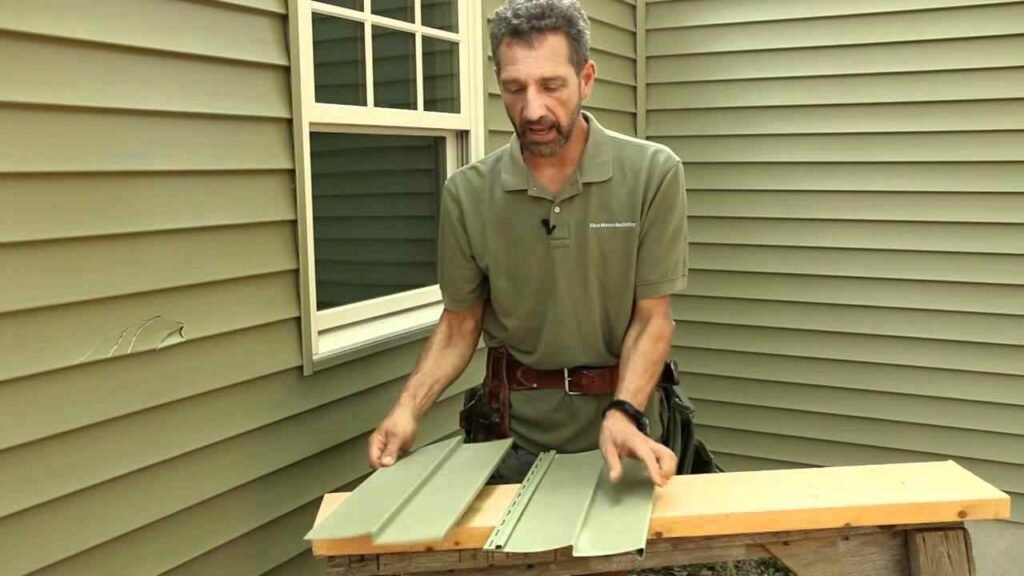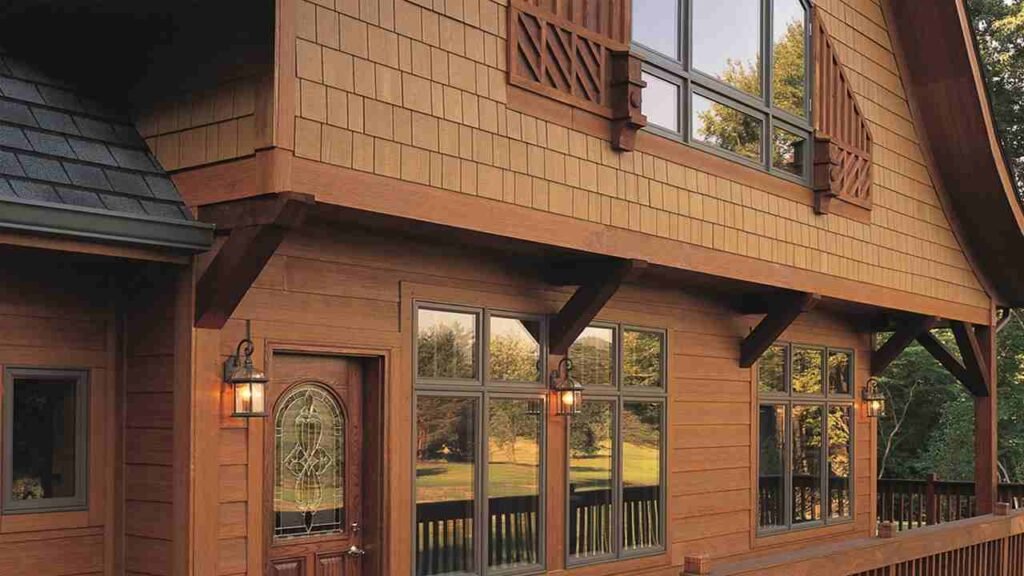When your home’s siding starts showing signs of wear and tear, it can be tough to decide whether to repair or replace it entirely. Maybe you’ve noticed cracks, fading, or even water damage, and now you’re wondering what the best course of action is. Both siding repair and replacement have their benefits, but the right choice depends on the condition of your siding, your budget, and your long-term goals. In this guide, we’ll explore the factors that can help you make the most informed decision for your home, supported with Humberto Maradiaga.

Whether you want a quick fix or a complete refresh, understanding the pros and cons of siding repair services versus replacement can save you time and money in the long run. Factors like the extent of the damage, the age of your current siding, and even the climate in your area play a significant role in making the right decision. By evaluating these factors and consulting professional siding repair services, you’ll ensure your home stays protected and looks its best for years to come.
Assessing the Condition of Your Siding
Before deciding between siding repair and replacement, it’s crucial to assess the current condition of your siding, as it directly impacts the cost of siding installation. Look for signs of wear such as cracks, warping, and holes, which can increase repair expenses. Additionally, check for discoloration, mold growth, or water damage, as these issues may lead to more costly repairs or even full replacement. Sometimes, a small damaged area can be repaired at a lower cost, but extensive damage may increase the overall installation cost. Inspect your siding from all angles, especially around windows and doors where damage may lead to higher costs. A professional inspection can provide clarity on the potential expenses for repair or replacement.
Common Signs Your Siding Needs Repair
Certain signs clearly indicate that your siding needs repair, especially when considering siding options for historic homes. Small cracks or dents in traditional or specialty siding can often be fixed without the need for a full replacement, preserving the home’s original aesthetic. Bubbling or blistering siding, especially in older materials, is a strong indication that moisture has gotten trapped beneath the surface, potentially affecting the integrity of the historical structure. Fading color can also signal aging siding, and when dealing with historic homes, it’s crucial to choose materials that match the original look.
When to Consider Full Siding Replacement
In some cases, repairs won’t be enough, and full siding replacement is necessary, especially when choosing the best siding material for my home. If your siding has extensive damage, such as large areas of rot, widespread warping, or multiple missing panels, replacing it may be more cost-effective in the long run. If your home has sustained major weather damage or you notice high energy bills due to poor insulation, these are signs that a full replacement is the better option. Additionally, if your siding is more than 20 years old, upgrading to newer, more efficient materials might be a smart investment. This is particularly true when considering options that not only enhance your home’s appearance but also improve its energy efficiency and durability.
Cost Comparison: Repair vs. Replacement
When it comes to the cost of siding repair versus replacement, repairs are generally less expensive upfront. Repairing small areas of damage can save money, especially if the majority of your siding is still in good condition. However, if the damage is widespread, repair costs can quickly add up, making replacement a more cost-effective option in the long term. Replacing siding offers a fresh start and can increase the value of your home. The cost will depend on factors like the material chosen, the size of your home, and labor expenses, but in many cases, replacement offers better long-term benefits.
The Lifespan of Different Siding Materials
Different siding materials have varying lifespans, which can help determine whether you should repair or replace. Vinyl siding typically lasts around 20 to 30 years, while wood siding can last up to 40 years with proper maintenance. Fiber cement and metal siding are some of the longest-lasting options, with lifespans of 50 years or more. If your siding is nearing the end of its expected life, replacing it with a more durable material might be the best choice. However, if your siding is relatively new, repairs can extend its life without the need for a full replacement.
The Environmental Impact of Siding Choices
Choosing between siding repair and replacement can also impact the environment. Repairing your siding, rather than replacing it, reduces the amount of waste sent to landfills. If replacement is necessary, consider using eco-friendly materials like fiber cement, which is more sustainable than vinyl or wood. Some manufacturers also offer recycled siding materials, reducing the environmental footprint of your project. Additionally, properly insulated and maintained siding can improve your home’s energy efficiency, further lowering its environmental impact. Balancing repair and replacement with eco-conscious decisions can benefit both your home and the planet.

How Siding Repair Can Improve Your Home’s Energy Efficiency
Damaged or worn siding can lead to air leaks, causing your home to lose heat in the winter and gain heat in the summer, which increases energy consumption. Repairing your siding can significantly boost your home’s energy efficiency by closing gaps and cracks that allow air to escape. Properly sealed siding keeps your home better insulated, helping to lower energy bills and maintain a more comfortable indoor environment. If insulation is lacking behind your current siding, repairs can also offer an opportunity to add more insulation, further improving efficiency.
Enhancing Curb Appeal with New Siding
Replacing old, damaged siding with new materials can dramatically enhance your home’s curb appeal. Whether you opt for a modern look with sleek fiber cement or stick to a classic wood aesthetic, new siding instantly refreshes your home’s exterior. Repairs can also improve curb appeal, particularly when damage is minimal and isolated to specific areas. Freshly repaired or replaced siding not only looks better but also sends a message that the home is well-maintained, which can boost your property value. Choosing colors and styles that complement your home’s architecture ensures long-lasting visual appeal.
Weather Considerations for Siding Decisions
Louisville experiences a range of weather conditions, from heavy rain to extreme heat, which can impact the lifespan of your siding. If your area frequently deals with storms or high humidity, it’s essential to consider how well your siding material can withstand these conditions. Materials like fiber cement and metal are more resistant to harsh weather, while wood may require more frequent repairs or replacement. Choosing the right material based on your local climate can reduce long-term maintenance and repair costs, making replacement more appealing if your current siding isn’t up to the challenge.
Hiring a Professional for Siding Repair Services
Hiring a professional for siding repair services is a smart choice to ensure the job is done correctly and efficiently. Professionals have the expertise to assess the condition of your siding and recommend the best course of action. They can identify hidden issues, such as moisture damage or pests, that might go unnoticed by a homeowner. Additionally, hiring a reputable contractor ensures that repairs are done according to local building codes, reducing the risk of further damage. With a professional, you’ll also benefit from warranties and guarantees, providing peace of mind for your siding investment.
Long-Term Maintenance Tips for Siding Durability
To extend the life of your siding, regular maintenance is key. Clean your siding annually to remove dirt, mold, and mildew that can weaken the material over time. Inspect it after storms or harsh weather for signs of damage, and address repairs promptly to prevent small issues from becoming bigger problems. Trim trees and bushes away from the siding to reduce the risk of scratches or damage from branches. By maintaining your siding, you’ll not only preserve its appearance but also prevent costly repairs or replacement down the line.
Conclusion
In conclusion, deciding between siding repair and replacement depends on several factors, including the extent of the damage, the age of your current siding, and your budget. Repairing minor damage can extend the life of your siding and improve your home’s energy efficiency, while a full replacement offers long-term benefits like enhanced curb appeal and better protection against the elements. It’s essential to assess the condition of your siding carefully and consult with a professional to determine the best course of action. Whether you choose to repair or replace, maintaining your siding is key to preserving your home’s value, energy efficiency, and appearance over time. Making an informed decision ensures your home remains well-protected and visually appealing for years to come.
FAQs
When should I repair my siding instead of replacing it?
Minor cracks, chips, or localized damage can often be repaired, saving time and money over a full replacement.
What signs indicate it’s time to replace my siding?
Extensive damage, fading, warping, or frequent repairs are signs that your siding may need to be replaced.
Is repairing siding more cost-effective than replacing it?
In the short term, repairs are cheaper, but replacement may be more cost-effective if the damage is widespread.
How long does siding repair typically last?
A quality repair can extend the life of your siding by several years, depending on material and maintenance.
Can I match the color of repaired siding with the original?
While possible, older siding may have faded, making it challenging to get an exact color match without replacement.
